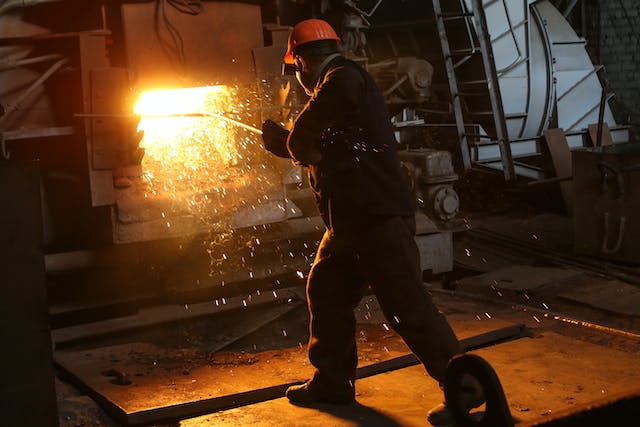The American steel industry has experienced a lot throughout its lifetime. From its rise during the Civil War to its downfall in the 20th century’s second half and to now serving as the backbone of the country, steel has helped and enabled the American nation to achieve the impossible. It is also one of the most recycled metals on earth. Let’s revisit history and try to understand why the future of this American industry is bright.
The Rise of American Steel
The history of American steel usage and production has been around for a long time. It wasn’t until the 19th century when new techniques and technological advances were made to produce better quality steel at comparatively lower prices. As a result, the manufacturing and popularity of steel increased twofold.
In America, rich iron deposits surrounded Lake Superior while Pennsylvania consisted of an excess amount of coal. As a result, the Midwest became the center for American manufacturing. In the 1880s, American steel production grew tremendously from 1.25 million tons per year to 10 million tons.
By 1940, America was producing 24 million tons of steel each year. At the time, America was the biggest and highest steel manufacturing country thanks to several inventors who helped extend the application of steel to bridges, railroads, and factories, etc.
According to the American history of steel production and utilization, the steel industry significantly grew following WWII. This was a time when war had brought the world to a standstill and destroyed everything in its path. Therefore, the demand for steel was higher than ever.
All this made the American steel industry grow at a rapid pace, ultimately becoming the most influential and powerful steel industry in the world. While Europe and Asia were rebuilding, the foreign mills had been destroyed and cities across the United States were on a path of steady recovery and development.
By 1940, the American steel industry was producing half of the world’s steel while employing nearly 700,000 workers throughout the 1950s. The year 1969 saw the American steel industry touching its peak of 141 million tons.
The End of An Era
Throughout the 20th century, the use of steel, as well as production, continued to increase. According to an estimate, steel production grew from just 28 million at the beginning of the century to a staggering 781 million tons by 1999. Even though most of the world’s output was coming from America but at the end of the 20th century, the country was producing less than 6% of the world’s steel.
As soon as the American steel industry touched its peak, it soon began to fall. The primary reason being the utilization and invention of more efficient steelmaking processes. Back in the day, open-hearth furnaces were used to make steel as compared to the modern-day oxygen furnaces that require relatively less manpower, energy, and work.
The countries that were once in ruins, began experimenting and developing new processes and technologies to gain a competitive edge by covering the gaps. Unfortunately, the American steel industry couldn’t work on that. Since other countries were now offering steel at lower costs, the American factories slowly went bankrupt and shut down.
Today, technological advancements and scientific discoveries have made steel production much more efficient. The factories do not employ hundreds of thousands of workers and are able to meet the demand in a few days if not weeks. However, while the American steel industry made efforts to revive, the country shifted its attention to service-centered businesses such as tech, media, and banking.
The State of Steel Today
Moving into the 21st century, America turned from being the biggest exporter and manufacturer of steel to the biggest importer in the world. The country now relies on other steel manufacturing countries to meet its demand. This is also a perfect illustration of how rapidly other economics have evolved and are evolving when it comes to using steel.
In addition to that, America now produces steel in mills or mini-mills that use scrap iron and steel. Even though it helps with cheaper processes and environmentally friendly production but without the use of iron ore, the country cannot come near to meeting its demands.
A Glimpse Into the Future
Considering the advancement in technology and processes, there is a huge variety of steels available out there in the market. Steels now differ based on hardness, abrasion resistance, and strength. The American steel industry is less labour-intensive and more technology-dependent.
As a result, America has been able to transform its traditional steel manufacturing processes into efficient and convenient ones. This has increased safety, reduced greenhouse gas emissions, and energy usage.
Despite what the American steel industry has gone through and witnessed, its struggle and efforts to revise history as the biggest or one of the biggest steel manufacturers continue. And with engineers looking to expand applications, the demand is only estimated to grow.
Final Word
Steel for America still serves as the backbone for major industries like the automotive industry. The country uses steel to make millions of both minor and major products each year that are sold worldwide. Therefore, the future demands that the American steel industry continues to make innovations and discover more efficient and effective techniques and processes to compete with the biggest markets in the world. This is the only way to ensure a bright future for the American steel industry.

